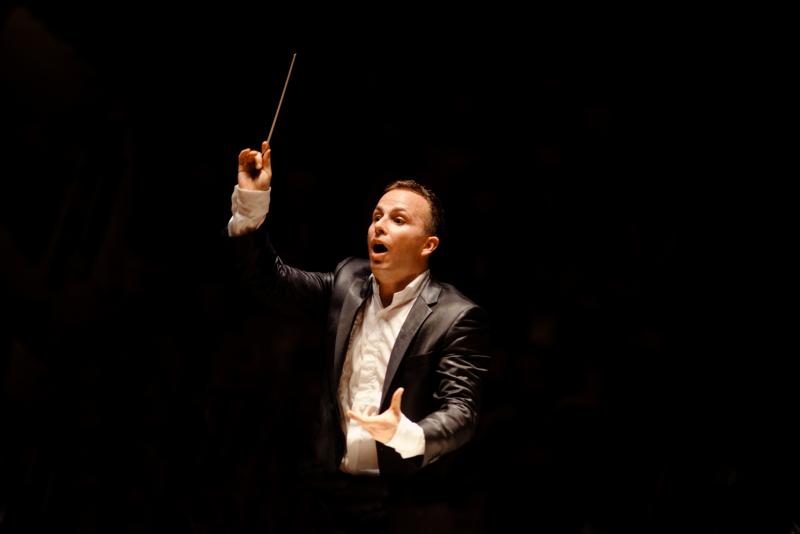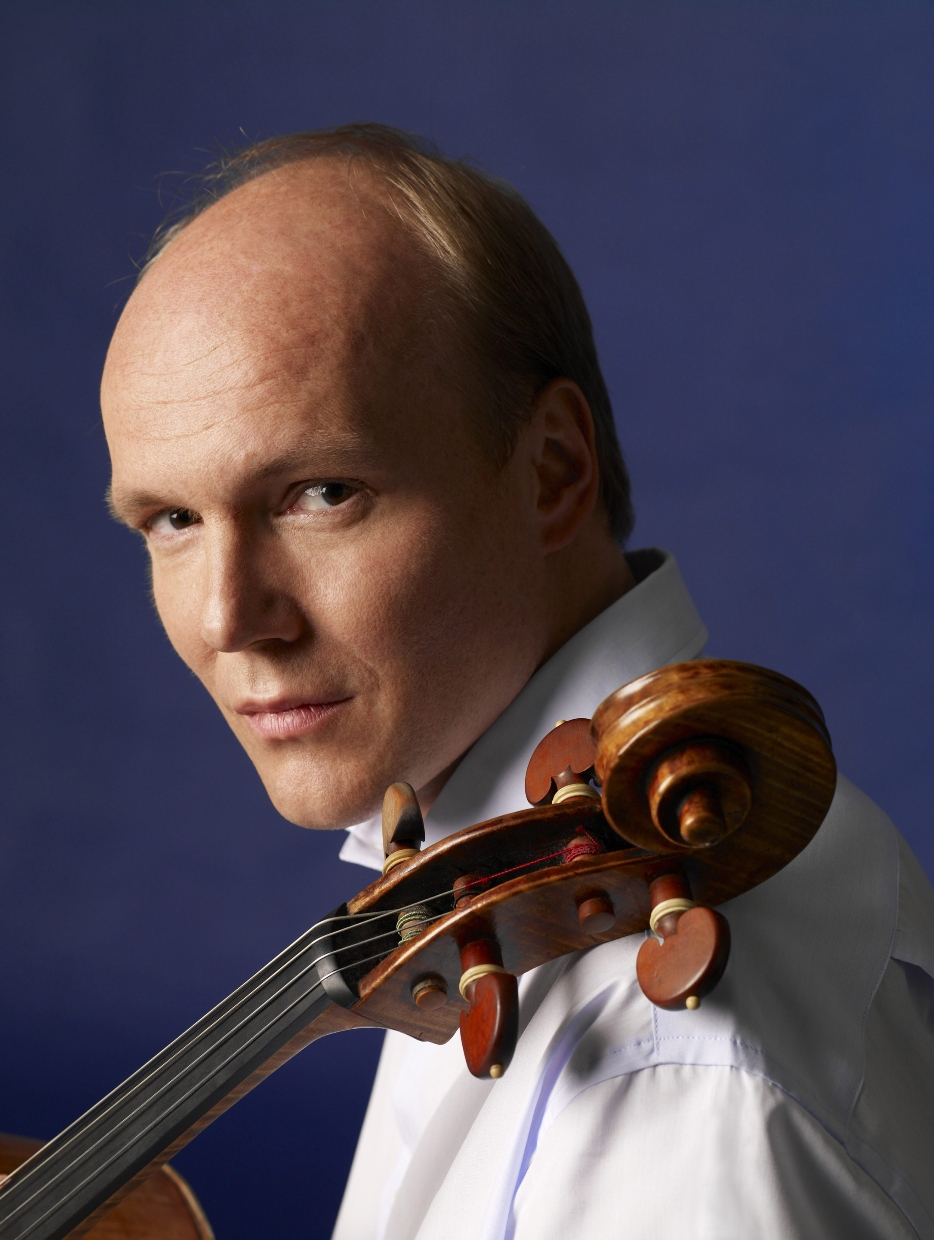Mørk, LPO, Nézet-Séguin, Royal Festival Hall | reviews, news & interviews
Mørk, LPO, Nézet-Séguin, Royal Festival Hall
Mørk, LPO, Nézet-Séguin, Royal Festival Hall
Clean, vivacious Haydn before a Quixotic plunge through Richard Strauss's looking glass

Mozart and Wagner were the opposite compass points of Richard Strauss’s classical-romantic adventuring, and Amadeus has often made an airy companion to the rangy orchestral tone poems in the concert hall. By choosing Haydn instead as the clean limbed first-halfer in two London Philharmonic programmes, Yannick Nézet-Séguin came armed with period instrument experience of the master’s symphonies in his dazzling debut concert with the Orchestra of the Age of Enlightenment.
Is this the most flawlessly inventive of Strauss’s longer orchestral works? It certainly seemed so in a performance exultant with the billowing phantasmagoria of these "fantastic variations on a theme of knightly character". Nézet-Séguin, the epitome of focused energy, built fluidly up to one magnesium flare after another, starting with the labyrinthine narrative of Quixote unhinged by too many chivalric romances – scary contributions here from the muted brass, later so audacious as bleating sheep - and turning the screw in the later variations which follow Cervantes’s novel after so singular a fashion. It was right that the wind machine should be more discreet than usual in our hero’s imagined flight through the air; the orchestra does all the work on the supernatural airiness here, and how, in this performance. Nézet-Séguin also blinded in the doom-beating homeward journey of defeated knight and squire. Tragicomedy of the highest order indeed.
 Yet what truly gives the work a depth unusual in Strauss’s orchestral music is the potential for imaginative interpretation in his writing for cello. Originally designated for an orchestral principal, and sometimes delivered as such in concert, the character of the long-faced knight really needs the nuance of a great soloist, and Mørk (pictured right by Stéphane de Bourgies) delivered at every turn: in poetic rising from the dust, in a hushed reaching out for transcendence in the night vigil at the very centre of the work, and in the noble long line which gilded a lovably sentimental deathbed scene.
Yet what truly gives the work a depth unusual in Strauss’s orchestral music is the potential for imaginative interpretation in his writing for cello. Originally designated for an orchestral principal, and sometimes delivered as such in concert, the character of the long-faced knight really needs the nuance of a great soloist, and Mørk (pictured right by Stéphane de Bourgies) delivered at every turn: in poetic rising from the dust, in a hushed reaching out for transcendence in the night vigil at the very centre of the work, and in the noble long line which gilded a lovably sentimental deathbed scene.
We also had real luxury in a Sancho Panza of the very highest calibre from violist Lawrence Power: daringly headlong in his proverb-spinning, more than a match for his master. Among the many moments of vividly voiced comedy in this interpretation, the most delicious was the pizzicato exchange in which Mørk's knight and Power's squire flicked water at each other after emerging from the upturned "enchanted" boat. LPO soloists, from clarinet to tenor tuba, added immeasurably at every turn to the encyclopedic pleasures of Strauss's great opera for orchestra.
The impression was one of a cleansing alertness and vivacity throughout
Haydn’s simple palette was the perfect complement in an impeccably articulated revelation of the Symphony No 44, nicknamed "the Mourning" (Trauer) because the composer supposedly asked for the Adagio to be played at his funeral. Here that seemed very plausible, with the violins discreetly caressing their lines and elegant turns to a spellbinding effect that was all the better for the period-instrument rule of no vibrato. This slow movement and the trio of the minuet brought us out into the radiant light of major keys in the thick of so much E minor; but since Nézet-Séguin made no heavy weather of the symphony’s "storm and stress" origins, the impression was one of a cleansing alertness and vivacity throughout.
The D major Cello Concerto is hardly in the same original league, and an elephant trap can render the soloistic elaboration of much generic courtly material heavy going. But there was no danger of that given Mørk’s elegance, spot-on intonation and free-range first movement cadenza. And as it turned out, the plain speaking of this pretty music was the perfect breather before our cellist's Quixotic plunge through the lunatic looking glass.
- Nézet-Séguin's next Haydn/Strauss programme, following the Nelson Mass with Ein Heldenleben, is on Saturday 24 November
rating
Share this article
The future of Arts Journalism
You can stop theartsdesk.com closing!
We urgently need financing to survive. Our fundraising drive has thus far raised £49,000 but we need to reach £100,000 or we will be forced to close. Please contribute here: https://gofund.me/c3f6033d
And if you can forward this information to anyone who might assist, we’d be grateful.

Subscribe to theartsdesk.com
Thank you for continuing to read our work on theartsdesk.com. For unlimited access to every article in its entirety, including our archive of more than 15,000 pieces, we're asking for £5 per month or £40 per year. We feel it's a very good deal, and hope you do too.
To take a subscription now simply click here.
And if you're looking for that extra gift for a friend or family member, why not treat them to a theartsdesk.com gift subscription?
more Classical music
 Monteverdi Choir, ORR, Heras-Casado, St Martin-in-the-Fields review - flames of joy and sorrow
First-rate soloists, choir and orchestra unite in a blazing Mozart Requiem
Monteverdi Choir, ORR, Heras-Casado, St Martin-in-the-Fields review - flames of joy and sorrow
First-rate soloists, choir and orchestra unite in a blazing Mozart Requiem
 Cho, LSO, Pappano, Barbican review - finely-focused stormy weather
Chameleonic Seong-Jin Cho is a match for the fine-tuning of the LSO’s Chief Conductor
Cho, LSO, Pappano, Barbican review - finely-focused stormy weather
Chameleonic Seong-Jin Cho is a match for the fine-tuning of the LSO’s Chief Conductor
 Classical CDs: Shrouds, silhouettes and superstition
Cello concertos, choral collections and a stunning tribute to a contemporary giant
Classical CDs: Shrouds, silhouettes and superstition
Cello concertos, choral collections and a stunning tribute to a contemporary giant
 Appl, Levickis, Wigmore Hall review - fun to the fore in cabaret and show songs
A relaxed evening of light-hearted fare, with the accordion offering unusual colours
Appl, Levickis, Wigmore Hall review - fun to the fore in cabaret and show songs
A relaxed evening of light-hearted fare, with the accordion offering unusual colours
 Lammermuir Festival 2025, Part 2 review - from the soaringly sublime to the zoologically ridiculous
Bigger than ever, and the quality remains astonishingly high
Lammermuir Festival 2025, Part 2 review - from the soaringly sublime to the zoologically ridiculous
Bigger than ever, and the quality remains astonishingly high
 BBC Proms: Ehnes, Sinfonia of London, Wilson review - aspects of love
Sensuous Ravel, and bittersweet Bernstein, on an amorous evening
BBC Proms: Ehnes, Sinfonia of London, Wilson review - aspects of love
Sensuous Ravel, and bittersweet Bernstein, on an amorous evening
 Presteigne Festival 2025 review - new music is centre stage in the Welsh Marches
Music by 30 living composers, with Eleanor Alberga topping the bill
Presteigne Festival 2025 review - new music is centre stage in the Welsh Marches
Music by 30 living composers, with Eleanor Alberga topping the bill
 Lammermuir Festival 2025 review - music with soul from the heart of East Lothian
Baroque splendour, and chamber-ensemble drama, amid history-haunted lands
Lammermuir Festival 2025 review - music with soul from the heart of East Lothian
Baroque splendour, and chamber-ensemble drama, amid history-haunted lands
 BBC Proms: Steinbacher, RPO, Petrenko / Sternath, BBCSO, Oramo review - double-bill mixed bag
Young pianist shines in Grieg but Bliss’s portentous cantata disappoints
BBC Proms: Steinbacher, RPO, Petrenko / Sternath, BBCSO, Oramo review - double-bill mixed bag
Young pianist shines in Grieg but Bliss’s portentous cantata disappoints
 theartsdesk at the Lahti Sibelius Festival - early epics by the Finnish master in context
Finnish heroes meet their Austro-German counterparts in breathtaking interpretations
theartsdesk at the Lahti Sibelius Festival - early epics by the Finnish master in context
Finnish heroes meet their Austro-German counterparts in breathtaking interpretations
 Classical CDs: Sleigh rides, pancakes and cigars
Two big boxes, plus new music for brass and a pair of clarinet concertos
Classical CDs: Sleigh rides, pancakes and cigars
Two big boxes, plus new music for brass and a pair of clarinet concertos
 Waley-Cohen, Manchester Camerata, Pether, Whitworth Art Gallery, Manchester review - premiere of no ordinary violin concerto
Images of maternal care inspired by Hepworth and played in a gallery setting
Waley-Cohen, Manchester Camerata, Pether, Whitworth Art Gallery, Manchester review - premiere of no ordinary violin concerto
Images of maternal care inspired by Hepworth and played in a gallery setting

Add comment